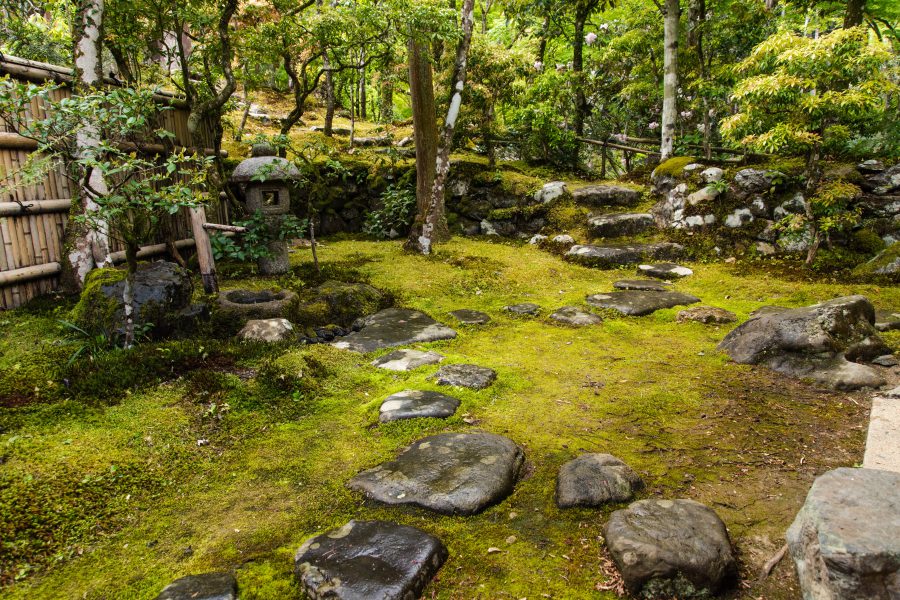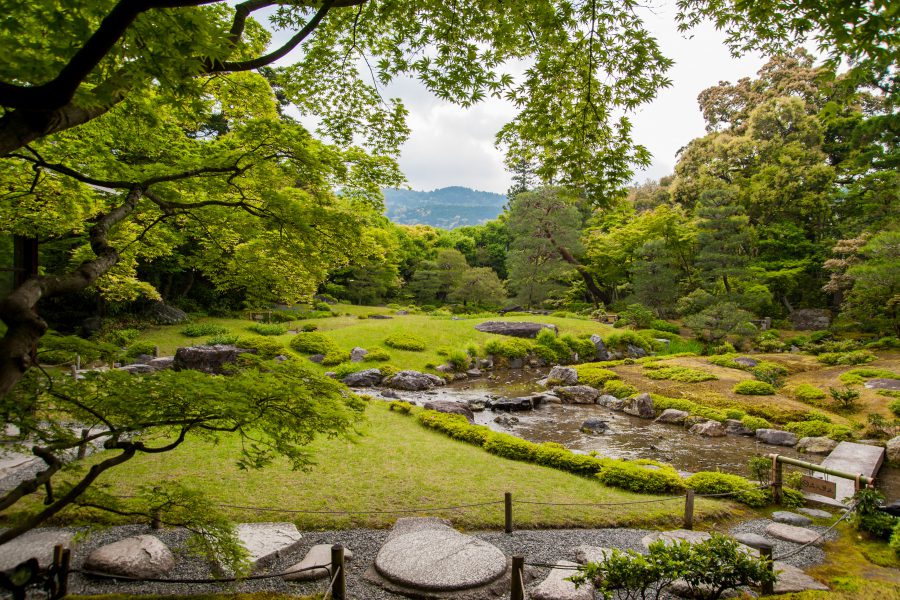Garden Knowing/
keywords
Tobi-ishi: Stepping Stones
 At Ikō-an, a modern tea garden located in UNESCO World Heritage Site Kosan-ji Temple located on Mt. Toganoo, the stepping stone path combines smaller and larger natural stones gathered from the surrounding area, resulting in a simple yet fitting ambiance for a mountain tea garden.
At Ikō-an, a modern tea garden located in UNESCO World Heritage Site Kosan-ji Temple located on Mt. Toganoo, the stepping stone path combines smaller and larger natural stones gathered from the surrounding area, resulting in a simple yet fitting ambiance for a mountain tea garden.
Tobi-ishi: Stepping Stones
In the English language, few words describe a means-to-an-end approach more directly than “stepping stone.” In a Japanese garden too, stepping stones serve the instrumental purpose of leading guests to a tea ceremony without soiling their clothes. Yet the Japanese name tobi-ishi (meaning “sporadic stones”) suggests an awareness that the technique of placing the stones not too straight, but at somewhat discontinuous intervals also played an important aesthetic role in the garden’s scenery. Whatever the case, the stepping stone path illustrates like nothing else how the creative tension between functionality and beauty in a Japanese garden literally extends right down to our feet.
When walking through a Japanese garden, the size and placement of its stepping stones contain subtle power to control where we move and what we see (or don’t see). Stepping stones can be placed in many styles, but typically a series of stones small enough to fit one foot is followed by a larger stone upon which both feet can be placed. This naturally leads our eyesight toward our feet, so when we finally reach a larger stone, we stop and look up at the surrounding scenery.
It may seem like a simple trick, but when effectively integrated into a tea garden, stepping stones can have the ingenious effect of filling the path toward the teahouse with viewing points. This may explain how, despite the tea garden’s narrow confines, stepping stones convey the impression of entering deep mountain scenery, thus priming us to leave behind secular cares before arriving at the teahouse.
Yet also abundant are examples of stepping stones clearly designed to be enjoyed as scenic objects themselves. In Kyoto and Tokyo, some of the most celebrated instances of such stones are seen at seventeenth-century strolling pond gardens such as Katsura Imperial Villa and the Former Shiba Detached Palace Gardens. Some modern gardens later used millstones and the foundation stones of temple pillars as stepping stones. In Kyoto, millstones were even used as water-crossing stones, thus adding a hint of rustic village scenery to their garden’s composition.
Just as a narrator may either be inside or outside the plot of a novel, stepping stones can seem to be part of their garden’s landscape, but also outside of it. If so, whether they are more functional or more beautiful could depend on the story we most want them to tell.
 A round and flat processed stone (known as a temple stone) is often used as a “path-dividing stone” (fumiwake-ishi) that splits a garden’s path and directs guests’ attention to its most stunning scenery. At Murin-an, this stone invites visitors to stop walking and gaze at the borrowed scenery of the Higashiyama mountains in the background.
A round and flat processed stone (known as a temple stone) is often used as a “path-dividing stone” (fumiwake-ishi) that splits a garden’s path and directs guests’ attention to its most stunning scenery. At Murin-an, this stone invites visitors to stop walking and gaze at the borrowed scenery of the Higashiyama mountains in the background. 